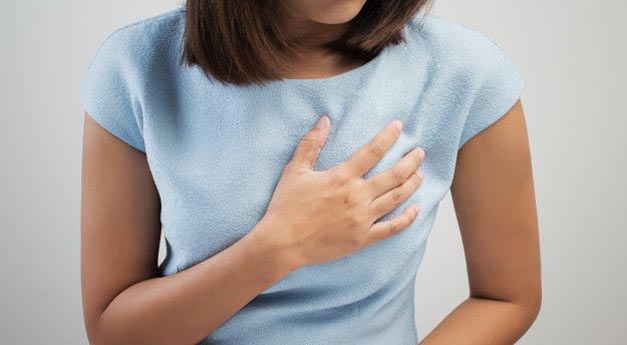Breast Pain and Breast Cancer | Women’s Health
Understanding Breast Pain: A Common Yet Misunderstood Symptom
Breast pain, medically known as mastalgia, is a prevalent concern among women of all ages. It is crucial to distinguish between cyclical breast pain—which fluctuates with hormonal changes—and non-cyclical breast pain, which is unrelated to menstruation. While it is natural to fear that any discomfort in the breast could indicate breast cancer, the truth is that most cases of breast pain are not cancer-related.
Types of Breast Pain: Cyclical vs. Non-Cyclical
Cyclical Breast Pain
Cyclical pain is tightly linked to the menstrual cycle and is often due to hormonal fluctuations involving estrogen and progesterone. It usually affects both breasts, especially the upper outer quadrants, and is most intense before menstruation begins.
-
Common in women aged 20–40
-
Usually resolves with menstruation
-
May come with breast swelling or lumpiness
Non-Cyclical Breast Pain
Non-cyclical pain is unrelated to the menstrual cycle and often occurs in one breast. It can originate from muscles, joints, or chest wall structures, not just breast tissue.
-
Common in postmenopausal women
-
May be sharp, burning, or localized
-
Could be caused by injury, cysts, or medications
Breast Pain and Breast Cancer: What’s the Link?
Many women fear that breast pain signals cancer, but this is rarely the case. According to studies, breast cancer is typically painless in the early stages. When pain is present, it usually accompanies other symptoms such as:
-
A palpable lump
-
Skin dimpling or changes in breast contour
-
Nipple discharge, especially if bloody
-
Redness, scaling, or inversion of the nipple
Breast cancer-related pain is more likely to be persistent, localized, and not influenced by the menstrual cycle.
When to Worry About Breast Pain
While most cases are benign, it is important to consult a healthcare provider if:
-
The pain lasts longer than two weeks
-
It is localized and worsens over time
-
You notice a new lump or change in breast shape
-
There is discharge from the nipple, especially if bloody
-
Skin changes such as redness, thickening, or pitting occur
Common Causes of Breast Pain Unrelated to Cancer
Hormonal Fluctuations
Estrogen and progesterone levels can cause breast tissue to swell, leading to tenderness, especially in the luteal phase of the menstrual cycle.
Fibrocystic Breast Changes
These benign changes can cause lumpy, rope-like textures in the breast and discomfort, especially before menstruation.
Medications
Certain drugs, such as oral contraceptives, hormone replacement therapy, and some antidepressants, may contribute to breast tenderness.
Breast Cysts
Fluid-filled sacs can develop in the breast tissue and sometimes cause pain if they enlarge or become infected.
Injuries or Trauma
Even minor trauma can cause bruising or inflammation of the breast tissue, leading to prolonged discomfort.
Costochondritis
Inflammation of the cartilage connecting the ribs to the breastbone can mimic non-cyclical breast pain.
Diagnostic Evaluation of Breast Pain
A thorough clinical breast examination by a physician is the first step. Depending on the findings, additional tests may include:
-
Mammography: Recommended for women over 40 or if there is a suspicious lump.
-
Ultrasound: Especially useful in women under 35 or to evaluate lumps not visible on a mammogram.
-
MRI: Used selectively in complex cases.
-
Biopsy: Performed if a suspicious mass or abnormal imaging result is found.
Treatment Options for Breast Pain
Lifestyle Modifications
-
Wearing a supportive bra, especially during exercise
-
Reducing caffeine and fat intake
-
Applying warm or cold compresses
-
Maintaining a healthy weight
Medications
-
Over-the-counter pain relievers like ibuprofen or acetaminophen
-
Evening primrose oil or vitamin E supplements (under medical advice)
-
Hormonal therapies for severe, persistent cyclical mastalgia
-
Antibiotics if an infection is present
Alternative Therapies
Some women find relief through acupuncture, yoga, or stress management techniques. While evidence is limited, these may reduce overall tension that contributes to discomfort.
Psychological Impact of Breast Pain
Chronic or unexplained breast pain can lead to anxiety, especially when cancer is feared. Education, reassurance, and a detailed medical evaluation can alleviate much of this concern. It is essential for healthcare providers to address both physical and emotional aspects of breast health.
Reducing Breast Cancer Risk
While breast pain is seldom a sign of cancer, it is always prudent to follow breast cancer prevention guidelines:
-
Regular self-examinations
-
Annual clinical exams and mammograms after age 40
-
Healthy lifestyle choices: balanced diet, regular exercise, and avoiding alcohol and tobacco
-
Genetic testing and screening for high-risk individuals
Conclusion: Know Your Body, Trust the Signs
Breast pain, though uncomfortable and worrying, is often a benign condition linked to hormonal cycles, lifestyle factors, or non-cancerous breast disorders. Staying informed and consulting a healthcare provider when symptoms persist is the best course of action. Regular screenings and an awareness of what is normal for your body are essential tools in ensuring long-term breast health and peace of mind.





